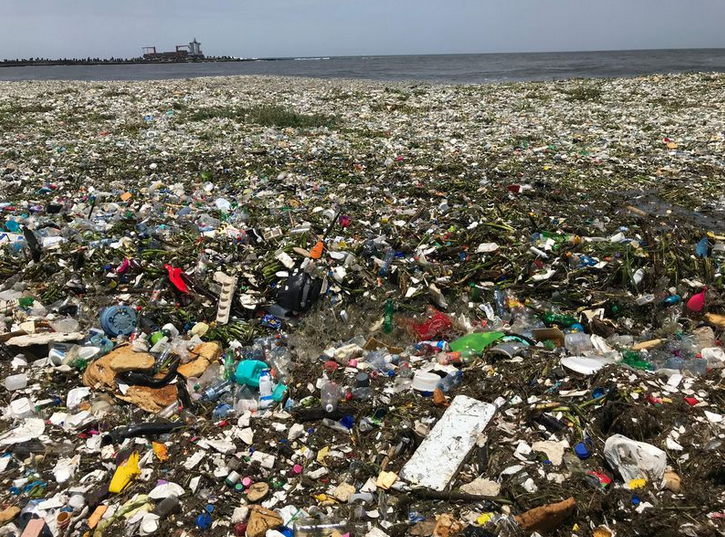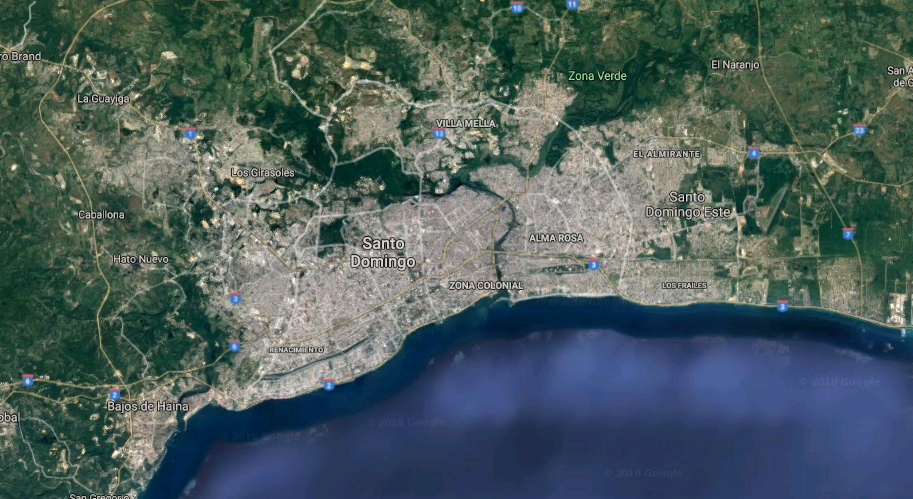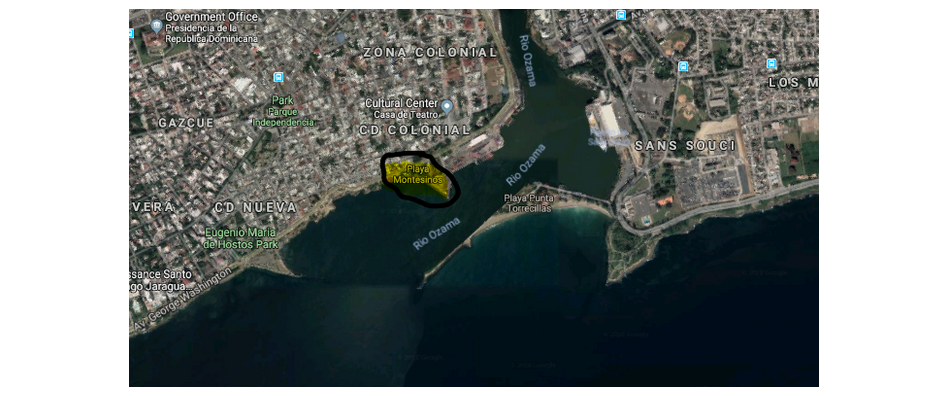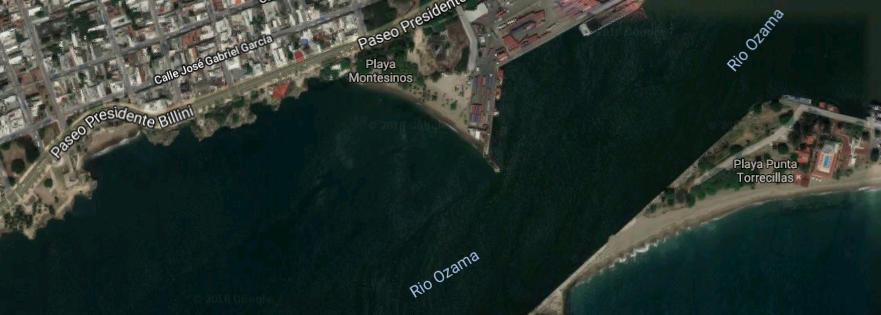 In another life, when I was living in New York and the winters were too much to bear, I’d often head for a hammock in the Dominican Republic. The local beer, Presidente, is one of the finest drops on the planet, the locals less likely to rob you than in neighbouring Haiti or Puerto Rico and the beaches are first-rate. You can perhaps imagine my distress when, over this past weekend, a barrage of stories appeared around the world to the effect that those stretches of clean, golden sand I remember so fondly are being ruined by a seaborne invasion of plastic detritus.
In another life, when I was living in New York and the winters were too much to bear, I’d often head for a hammock in the Dominican Republic. The local beer, Presidente, is one of the finest drops on the planet, the locals less likely to rob you than in neighbouring Haiti or Puerto Rico and the beaches are first-rate. You can perhaps imagine my distress when, over this past weekend, a barrage of stories appeared around the world to the effect that those stretches of clean, golden sand I remember so fondly are being ruined by a seaborne invasion of plastic detritus.
The stories’ accompanying video, provided by the Parley for the Oceans NGO, seemed to sum up the case that, yes, just as environmental activists have been claiming, the seas are awash with plastic and humankind simply has to do something about the crisis before it is too late. True, environmentalists say that about every latest “threat”, but the footage of old bottles, Styrofoam chunks, discarded rubber gloves and orphan thongs rocking against the shore was persuasive. The rubbish is so thick you can’t make out the water, just a floating carpet of ugly trash undulating with the movement of the waves beneath. A still from that footage is embedded below. But before you write a cheque to the NGO which distributed the footage to eager and unquestioning news outlets, read on.
 As with so many other green scares, like the Great Extinction furphy Tony Thomas has dismantled, the floating garbage blanket is not what it seems. Indeed, it is nothing like it seems — or, by the same token, anything like the way it has been presented by Time, the Smithsonian, SBS, BBC, Al Jazeera, CNN, plus too many other media outlets to mention.
As with so many other green scares, like the Great Extinction furphy Tony Thomas has dismantled, the floating garbage blanket is not what it seems. Indeed, it is nothing like it seems — or, by the same token, anything like the way it has been presented by Time, the Smithsonian, SBS, BBC, Al Jazeera, CNN, plus too many other media outlets to mention.
This where a little local knowledge is a blessing, as it was the beach named in all those reports, Playa Montesino, which gave the game away.
Antonio de Montesinos was a member of the Dominican order and Spanish missionary who landed in what is now the Dominican Republic early in the sixteenth century. He made quite an impression, not least because he lambasted the conquistadores for their abysmal treatment of the natives. Several centuries later, a gigantic statue was erected in his honour at the mouth of the Ozama River. That’s him at right, gazing out to sea as he calls heathens unto God. The plastic-battered beach, a negligible stretch of sand no sane bather would visit, plastic tide or not, is at his feet.
Why would swimmers spurn a beach described by CNN and just about every other report as “a pristine shore”? Let’s answer that step by step, first by taking a look at the Google earth image (below) which shows the sprawl of Santo Domingo, the capital. Notice the river which empties into the sea beneath the “zona colonial” annotation. That’s the Ozama ending a journey which began high in the mountainous hinterland.

Now let’s move in for a closer look. Playa Montesino is circled.

And closer still….

The key topographical element to note is that man-made triangular headland on which the Montesinos statue stands. What happens, do you reckon, when the Ozama is running high, which happens every year at this time, the Caribbean rainy season?
The first thing that happens is that every item of trash beside the 140km river’s course is swept into the water and carried to the sea. When it gets to that headland, the current is squeezed through the narrow gap and this sets up a gyre in the promintory’s lee. If there is rubbish in the Ozama when it gets to Santo Domingo, a big portion of it ends up on Playa Montesinos — and from there, with a lot of help from NGO Parley for Oceans, into news reports the world over. Add the prevailing onshore wind and there will be even more beach-bound plastic to make for shocking footage on the nightly news.
And the thing is, while the Dominican Republic has many, many lovely people — especially those bringing the next Presidentes to your hammock — Third World standards of rubbish removal prevail, as even the national government admitted in a state-funded documentary (below)
So there is nothing about the recent spate of news reports that in any way reflects the truth.
The garbage was never at sea in the first place; it comes straight from the hinterland.
The beach isn’t and has never been “pristine”, not least because the city’s docks complex (just visible on the right in the third satellite shot above) and container terminal is just upstream. The only swimmers who might favour it would be those who enjoy oil slicks and water polluted by 140 kms of effluent.
And finally, contrary to what news reports would have you believe, there is absolutely nothing unusual about this example of aggregated plastic to suggest the world’s seas are choking . That may indeed be the case but this example of activist hype doesn’t prove a thing.
Undoubtedly, NGOs and enviro activists being what they are, we’ll all see that footage many times as the green push to limit plastics use continues, the enviro crusade du jour. So don’t be fooled — it’s rubbish in every sense.
UPDATE: Why would Parley for the Oceans go to such trouble whipping up a pastiche of omissions and misrepresentations? Perhaps the financial support it garners from enviro-conscious donors (below, from its website) explains a few things.

Incidentally, notice the irony in Studio Schnabel’s backing. Artist and principal Julian Schnabel, famously derided by the late Robert Hughes, made his name and fortune selling paintings encrusted with broken dinner plates. You would think a bit more rubbish wouldn’t bother him.
 Sign In
Sign In 0 Items (
0 Items ( Search
Search









I am currently trialling working remotely from the Philippines, in Subic Bay. This area has felt the tail end of Typhoons over the last few weeks the result being a beach awash with plastic waste and the usual collection of wood etc.
Plastic is collected, small branches and leaves are buried and the rest burnt.
I asked the manager of the hotel I am living in and he tells me that most of the plastic waste is a result of poverty.
Apparently, the locals cannot afford to buy large bottles of shampoo (for example) and so buy sauce sized satchels that find their way into the waterways.
They don’t need do-gooders to reduce waste, they need capitalism.
My “locals” by and large can’t afford (or won’t pay) $5 a month for rubbish collection, so much rubbish ends up in the storm-water drains & creeks and a good part wends its way to the ocean, especially that which may float, like plastic bottles.
I have asked Roger to post a picture from ‘National Geographic’ from June 2004 showing the extent that plastics are used in our ordinary lives and in an ordinary home.
Curiously, I remember the Greens Leader berating people for not being environmentally conscious after flying in a plane to Tasmania and drinking bottled water from a plastic bottle.
Hypocrisy on show.
A simple internet search brought up a number of online retailers of those grey “singlet” plastic bags (with the Chesty Bond type carry handles). Right size, thickness etc so I bought 1,000 of them at 0.6c each – total $6.00.
I just leave the pack in the car boot and stack groceries into them straight from the supermarket trolley rather than at the the self-serve checkout as before. No real change from that which pertained previously and it does not reward virtue signalling.
Doing away with free plastic bags provided at the checkout by the checkout operator is a logical extension of the new business model sweeping the world whereby you get the customer to do all the work instead of paid employees thus enabling the business to sack employees and improve the bottom line. The younger generation think they are being tech savvy by doing it themselves but in reality business is laughing at their immaturity.
because improving the bottom line will end so badly for us all?
No, white laughter – nothing wrong with improved bottom lines – the laughter is because they are getting people to work for nothing. This war on plastic is hotting up, as can be seen on a show on the ABC and various manifestations of virtue signaling by corporate and government players. I saw a recent article which says that government revenues from tax at the bowser on petrol will fall in the near future as more people switch to electric cars. This means funds for road building and maintenance will need to be raised by other means from owners of electric cars. What is not said is what is going to happen as a result of the lower demand for petrol? For a start the price of petrol will go up and it will become scarce because crude oil production will have to be reduced as well. This reduction will then impact on other products derived from the different fractions of the crude oil refinery process. Plastics are a downstream product of the refinery process and will also become scarcer and hellishly expensive so possibly that is why we are back to string bags – the greenies will love that because they will be able make string bags out of the fibre from their unsold marihuana crops when it is legalized and there is a market glut.
I forgot to add that plastic bags came into vogue some years back as industry virtue signaling when the greens ushered in their horror catastrophe on how paper bags at supermarkets were deforesting the planet and we had to save it or else. I wonder what’s next on their catastropharian list?